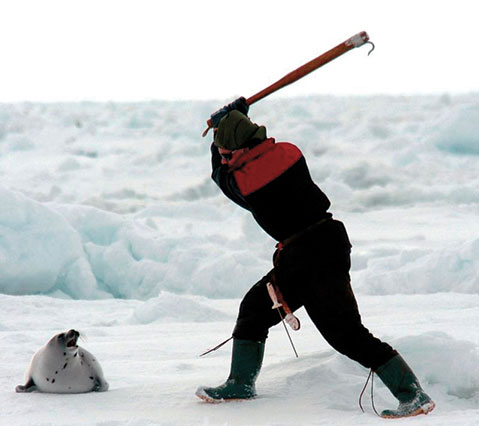‘Huntwatch’
Director Brant Backlund

With spy cameras, historical footage, stunning visuals, and a truly legendary protagonist in activist Brian Davies, this lays bare the past, present, and future of Canada’s seal hunting industry and the people who have been fighting it for decades.
What was the primary motivation for making this film?
When the producers approached me with the idea to make Huntwatch, they wanted to make a film that was powerful enough to end the Canadian commercial seal hunt. Personally, I didn’t know much about the seal hunt at all. The more I learned about it, the more I was amazed that this was happening and largely under the radar. I was really fascinated by the characters that have devoted their lives to stopping the hunt but I also wanted to try to understand the hunter’s perspective. This is a fiery debate that has been going on for almost 50 years. We wanted to make a film that was a window into this bizarre world that plays out every spring in a forgotten corner of the world.
How many seals are being hunted annually now?
In 2014, hunters were actually allowed to kill 400,000 harp seals by the Canadian government. However, there are very few markets left to sell seal products so the quota wasn’t met and 60,000 seals were killed.
Why do you think this issue resonates so loudly with the public and politicians in Europe but typically falls on deaf political ears in Canada?
This is a difficult question to answer, because it comes down to the nuances of Canadian politics. I think that Europe has a progressive reputation and a track record on environmental and animal welfare issues. But in parts of Canada, commercial seal hunting is seen as a proud tradition passed down through generations. Across Canada most people actually oppose this hunt, although sealing provinces hold enough political power that very few politicians are willing to take a stand against it.
It would seem that so many other pro-animal and environmental campaigns have followed Brian Davies approach in the decades since. Would you agree? Explain a little about his legacy.
Brian was a real pioneer in a lot of ways…writing the blueprint for running an environmental campaign. He started by using cameras and documentaries to expose the hunt to the world to build public support to end it. The key to Brian’s success was that he then used this public support to apply pressure in the political arena. He organized boycotts and used leverage to pressure lawmakers to act – shutting down markets for seal products. I think that really effective campaigns follow this formula and move from public support to political power. This approach has been extremely effective recently if you take a look at films like Blackfish and The Cove, which started as documentaries and are now creating real change.
Could you have asked for a more dynamic visual than red-blood on the ice and innocent baby seals and callus seal hunters?
Seal hunt imagery is incredibly powerful – and it makes it easy to vilanize the hunters. But I don’t think we can brand them as callous because they have a very different life experience than many people. One thing we wanted to do with Huntwatch is to try to understand the hunter’s perspective. They feel that this is an important source of income in an economically challenged region and it is a proud tradition passed down for generations.
The seal hunt imagery is naturally packed with emotion and this actually became one of our biggest challenges in making the film. We didn’t want to overwhelm the audience, so we made sure to pick our moments to include some really emotional scenes, but to also make it entertaining with lighter moments, action sequences, politics, spy cameras, etc.



